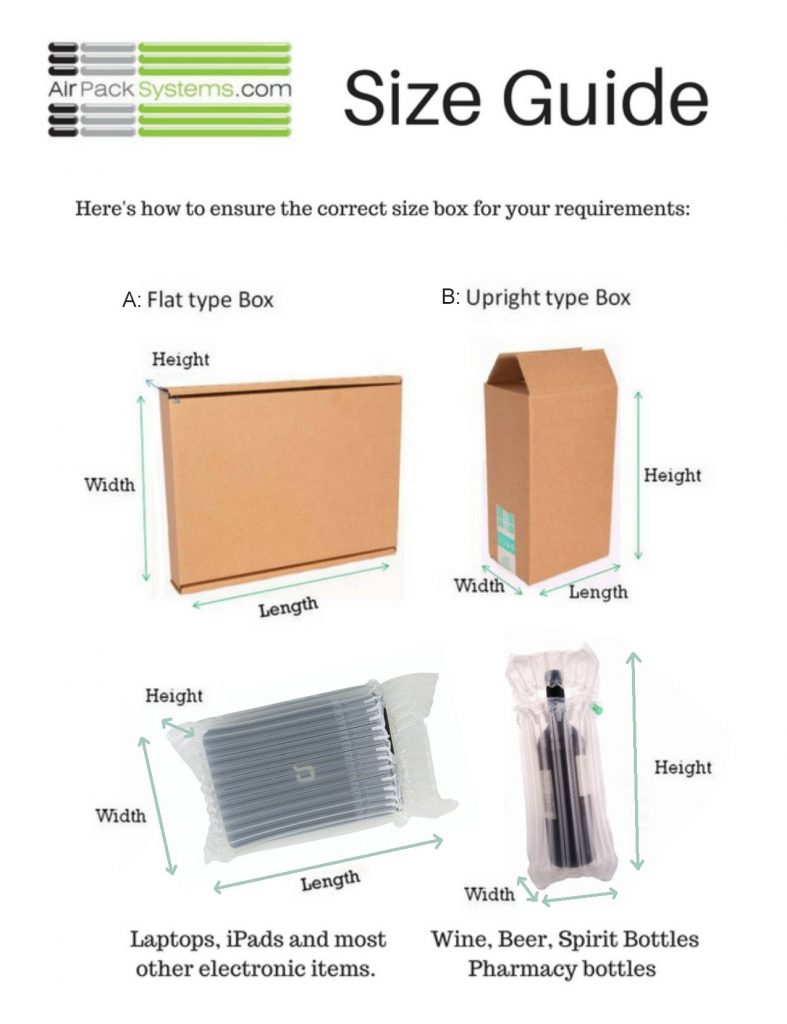Air packaging, also called inflatable packaging, is one of those things which sounds pretty simple and, like many of the best ideas, actually is. In essence, it comprises pillows of compressed air which can be inflated to different sizes.
Simple, yes, but also highly effective. For this innovative material protects fragile items, offering all-round cushioning to safeguard delicate things while they’re in transit. This packaging provides fail-safe protection so that whatever is being wrapped cannot move in its box, although less material is being used. Goods are kept away from the edges of the outer packing and enveloped in a cushion.
What’s more, air packs take up less storage space than some of the alternatives, since inflation is typically on demand so you need less warehouse space. Because of the different sizes available, and since you don’t necessarily need to fill to full inflation each time, you can customise how you package each product. You certainly don’t need multiple layers of it.
What’s more, each roll has perforations between the pillows, so you can tear them apart easily.
Still relatively new in the marketplace, air packing’s use and popularity are growing rapidly. And it’s being adopted by e-commerce giants such as Amazon. And it’s not just parcel senders who like it – those who receive the items appreciate getting their things in perfect condition, while this stuff is not messy or hard to open.
Money-saving
Plus you can even save money into the bargain, because air packs are so light they won’t add anything to shipping costs. You’ll also spend less by receiving fewer customer complaints about damaged products, with fewer returns to deal with and pay for.
Eco-friendly
Air packaging is also highly efficient when it comes to its disposal. While some of the alternatives comprise dyes which can often not be recycled, making getting rid of them complicated and environmentally harmful, inflatable packing is recyclable and so has a minimal impact on the planet.
Inflatable packaging from AirPack
Fuss and hassle-free, our AirPacks are a doddle to use and provide superior protection for your goods during transit. A series of individual chambers moulds themselves around the product to create a unique cushioning effect.
The packs inflate via a single nozzle on a regular compressor or handpump, which passes through a number of valves into separate air chambers which inflate and mould themselves around your product. If one of the chambers punctures in transit, the others stay inflated, absorb any shocks and ensure your product remains effective, meaning you enjoy the same level of protection whatever happens.
Talk to us today about our innovative packaging solutions, and how they could transform your e-commerce business or shop online now.
Related Articles.
A few of the reasons why packaging really matters to your brand
By ADMIN_AIRPACK • July 16th, 2024Some businesses seem to take packaging somewhat for granted, without putting too much thought into it or its importance. Yet, especially if you’re an e-commerce organisation, packaging is something which just about every business needs to use, whatever the size of your enterprise. And you may feel that you just want to go for the […]
Read more...How packaging can help you to reduce your carbon emissions
By ADMIN_AIRPACK • July 16th, 2024Climate change is obviously a hot topic, and it’s already affecting every region on Earth, with most scientists agreed that human activity is its single biggest cause. So, of course, lowering carbon emissions needs to be a top priority for all businesses. But despite a flurry of pledges on the climate, global emissions have continued […]
Read more...How inflatable packaging can improve customer retention
By ADMIN_AIRPACK • March 8th, 2024What is customer retention? Put simply, customer retention is the business of creating customer loyalty so that people make repeat purchases with you, and it says a lot about how satisfied they are with what you offer. For established brands in particular, keeping hold of loyal customers may almost be more important than attracting new […]
Read more...Back to blog
